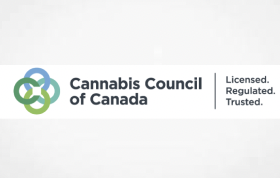The world of cannabis is rich with compounds that offer a range of therapeutic benefits, among which THCa (Tetrahydrocannabinolic Acid) and CBD (Cannabidiol) stand out, especially in the context of pain management. This article delves into the properties of THCa and CBD, comparing their effectiveness, modes of action, and what current research suggests about their use in treating pain.
THCa Overview
THCa is the non-psychoactive precursor to THC found in raw cannabis plants. It has gained attention for its potential anti-inflammatory and neuroprotective properties. Unlike THC, THCa does not produce a “high,” making it a subject of interest for those seeking therapeutic benefits without psychoactive effects. Recent studies suggest that THCa could play a role in pain management, particularly in reducing inflammation and possibly inhibiting pain signals in the nervous system.
THCa and Psychoactivity: The Role of Decarboxylation
When exploring the world of cannabis and its compounds, one crucial process that alters the properties of these compounds is decarboxylation. This process is particularly relevant to THCa (Tetrahydrocannabinolic Acid), the non-psychoactive precursor to THC (Tetrahydrocannabinol). Understanding how THCa can become psychoactive upon heating through decarboxylation is essential for both medical patients and recreational users.
The Science of Decarboxylation
Decarboxylation is a chemical reaction that removes a carboxyl group from a molecule, releasing carbon dioxide (CO2). In the context of cannabis, when THCa is heated, it undergoes decarboxylation to convert it into THC, the compound known for its psychoactive effects. This transformation occurs at a specific temperature range, typically around 220°F (104°C), when exposed for about 30 to 45 minutes, though these conditions can vary based on humidity, the amount of material, and the method of heating.
This process is not unique to the laboratory or industrial settings; it occurs every time cannabis is smoked, vaporized, or cooked into edibles. The heat from these activities triggers decarboxylation, converting THCa into THC and thus activating its psychoactive properties. This is why raw cannabis, which contains THCa, does not produce the “high” associated with THC until it is heated.
Heating or Burning THCa Flower: Methods and Effects
The act of heating or burning THCa-rich cannabis flower is a common practice among both medicinal and recreational cannabis users, primarily because it triggers the decarboxylation process, converting THCa into psychoactive THC. This transformation is what allows users to experience the full spectrum of THC’s effects, including its euphoric and therapeutic benefits. When THCa flower is smoked or vaporized, the heat applied is instantaneous and intense, rapidly decarboxylating THCa into THC as it is inhaled. This method is favored for its quick onset of effects, allowing users to gauge their experience in real-time and adjust consumption accordingly.
In addition to smoking and vaporizing, baking or cooking with THCa flower is another method to activate its THC content. This method requires a more controlled application of heat, usually in an oven, to ensure that the THCa is fully decarboxylated without burning the plant material. This is often done to prepare cannabis for use in edibles, where the activated THC is then absorbed through digestion. While this method offers a longer onset of effects compared to inhalation, it typically provides a more prolonged and potentially more intense experience, making it crucial for users to dose carefully. Whether through inhalation or ingestion, understanding the process of heating THCa flower is key to unlocking its full potential and ensuring a safe, enjoyable cannabis experience.
Implications for Consumption and Therapeutic Use
The knowledge of THCa’s transformation into THC through decarboxylation has significant implications for cannabis consumption and its therapeutic use. For consumers seeking the psychoactive effects of THC, understanding decarboxylation is crucial for preparing edibles or other forms of cannabis that require heating. Conversely, for those interested in the potential therapeutic benefits of THCa without the psychoactive effects, it highlights the importance of consuming raw cannabis or products that have not been decarboxylated.
Moreover, the process of decarboxylation is vital for clinicians and researchers studying cannabis and its components. Knowing how and when THCa converts to THC allows for more precise dosing and more accurate predictions of effects, which is essential for medical applications of cannabis.
The transformation of THCa into THC through decarboxylation is a fascinating aspect of cannabis chemistry with practical implications. Whether for therapeutic purposes or recreational use, understanding how THCa becomes psychoactive when heated is crucial for anyone looking to explore the benefits of cannabis. This knowledge not only aids in achieving desired effects but also contributes to safer, more informed use of cannabis products.
CBD Overview
CBD is widely recognized for its therapeutic properties, including its ability to alleviate pain, reduce inflammation, and enhance mood. As a non-psychoactive compound, CBD offers the benefits of cannabis without the high associated with THC. Its pain-relieving properties are attributed to its interaction with the body’s endocannabinoid system, making it a popular choice for chronic pain sufferers.
Comparing THCa and CBD for Pain
When comparing THCa and CBD for pain relief, it’s important to consider their mechanisms of action. CBD interacts with the endocannabinoid system to reduce pain perception and inflammation. THCa, though less studied, shows promise in similar areas but through different pathways. Both compounds offer potential benefits, but their effectiveness can vary depending on the type of pain and the individual’s physiology.
Latest Research
Recent research into THCa and CBD has shed light on their potential as pain relievers. Studies have shown that CBD can significantly reduce chronic pain, improve sleep, and decrease inflammation. THCa research, while in earlier stages, suggests that it too can reduce inflammation and may have neuroprotective effects that could be beneficial in chronic pain management.
Benefits Beyond Pain Relief
Aside from pain relief, THCa and CBD offer a range of other health benefits. THCa has shown promise in preclinical studies for its potential to address conditions like epilepsy and neurodegenerative diseases. CBD is well-documented for its efficacy in treating anxiety, depression, and certain forms of epilepsy. These additional benefits make THCa and CBD appealing options for holistic wellness.
Considerations and Side Effects
While both THCa and CBD are generally well-tolerated, they can have side effects and interactions with other medications. It’s essential to consult with a healTHCare provider before incorporating them into your pain management regimen. Understanding the source, quality, and concentration of THCa and CBD products is also crucial for effective and safe use.
FAQs
What is the main difference between THCa and CBD?
-
- THCa is a non-psychoactive precursor to THC with potential anti-inflammatory and neuroprotective properties, while CBD is known for its ability to alleviate pain, reduce inflammation, and improve mood without causing a high.
Can THCa get you high like THC?
-
- No, THCa does not produce psychoactive effects like THC. It must be decarboxylated (exposed to heat) to convert into THC, which is psychoactive.
Is CBD or THCa more effective for pain management?
-
- Both compounds have shown promise in pain management, but CBD has been more extensively studied and is widely recognized for its pain-relieving properties. The effectiveness of THCa and CBD can vary based on the individual and the type of pain.
Are there any legal concerns with using THCa or CBD?
-
- The legality of THCa and CBD varies by location. CBD derived from hemp (containing less than 0.3% THC) is legal in many places, but laws around cannabis-derived products can differ. It’s important to check local regulations.
How can I use THCa or CBD for pain?
-
- THCa is often consumed in raw cannabis form or as a tincture, while CBD is available in oils, edibles, tinctures, and topical products. The choice of product depends on personal preference, the specific condition being treated, and the desired effects.
Conclusion
In the debate of THCa vs. CBD for pain, both compounds offer unique benefits and potential as natural pain relief options. While CBD has a more established body of research supporting its use for pain, THCa presents an intriguing alternative that warrants further investigation. Ultimately, individual experiences and clinical studies will continue to shape our understanding of these compounds’ roles in pain management.


















